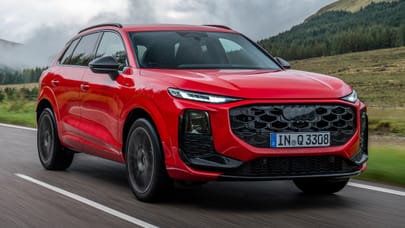
All you need to know about VW’s 670bhp Pikes Peak racer
The I.D. R Pikes Peak is undergoing final preparation for a mountain record

It houses a pair of batteries feeding a pair of electric motors to create a big whoopie

Two interlinked lithium-ion batteries sit either side of the cockpit, which provide power for the two electric motors – one on each axle.
In total, Volkswagen reckons on 670bhp and 480lb ft of torque.
Advertisement - Page continues belowIt’s really, really fast

Think 0-62mph in 2.25 seconds fast. Top speed is rated at a shade under 150mph. Plenty for a mountain, you might say.
Everything is controlled electronically. Obviously

How much of that 670bhp gets delivered at any given second largely depends on the mountain. We’re not talking about freak weather – though this remains a concern for any competitor at Pikes Peak – but more what’s happening on track: think braking, accelerating out of a hairpin or so forth.
The brakes and throttle too, are controlled not by cables but electronic control systems. When driver Romain Dumas depresses either throttle or brake, he’s actually depressing electricity. Sort of.
Advertisement - Page continues belowThere is an INVISIBLE FRIEND that helps power up the I.D. R on the go

The I.D. R is a helpful so-and-so. During the race, Volkswagen estimates it can produce up to 20 per cent of the required energy to scale Pikes Peak. The electric motors, when not offering Dumas the insane force needed to climb the mountain, turn into generators under braking.
Think about it this way. Power from Romain’s left foot (brake) flows back into the battery, which helps power Romain’s right foot (accelerator). There are brakes, of course, but as mentioned, operated via a brake-by-wire setup.
“The interplay between recovery and mechanical braking is controlled by electronic systems that the driver does not even notice,” VW’s head of electrics Marc-Christian Bertram explains.
See? INVISIBLE FRIEND.
VW’s racing division used expertise from the car division

Volkswagen’s getting big into batteries, you might have noticed. It has labs that perform stress tests on batteries, which helped the Motorsport division, who ran tests with individual cells and modules to make them race-fit.
“With a racing car, you have to be aware of special requirements for cabling and insulation,” VW explains.
Only one I.D. R actually exists

While the designers and engineers were free to design and engineer whatever the hell they wanted to – ie, a clean-sheet design – they only had one shot. “Before we actually assembled the I.D. R Pikes Peak,” explains Willy Rampf, “we used computers to analyse a multitude of different configurations.” Willy’s got a lot of F1 experience, so understands this more than most.
“We would not have the time to build multiple test vehicles. We had to get it right at the first attempt.”
It had to be lightweight and strong

Those computer simulations helped work out the ideal load-bearing balance of the chassis and so forth, but Volkswagen opted to build most of the thing – chassis, suspension, safety cell – from steel and aluminium, shunning more expensive motorsport affectations like titanium.
The aero bits are made from a carbon fibre/Kevlar composite, while the cockpit is built from carbon fibre.
Advertisement - Page continues belowBut it could produce yet more power

An interesting takeaway from the lightness is the battery power. Volkswagen deliberately restricted the total output to what it calls a “relatively low” 670bhp (500kW), so that the battery blocks could be made smaller. Ergo, smaller = lighter. Lighter = faster. Faster = record-breaking time.
Who knows what kind of power and performance a potential evolution of the I.D. R could yet yield…
It’s numbered ‘94’ because ‘I.D.’

Keen alphabetishists – it’s a thing we made up, roll with it – will know that ‘I’ is the ninth letter of the alphabet, while ‘D’ is the fourth. Hence, the I.D. R will carry the number 94 when it runs on 24 June.
Next.
Advertisement - Page continues belowIt’s aiming for a record-breaking electric Pikes Peak time

The target is to smash the current EV PP record of 8m 57.118s set in 2016. Volkswagen tells us driver Romain Dumas “will use every waking opportunity to bond with his car”. Though, he’s won Pikes Peak outright three times already so should be familiar with the course, so we hope he spends some of his waking hours doing other things.
One of those other things of course, is racing at Le Mans. This weekend. Racing for Porsche. Once he’s raced for 24hrs, he’s back off to Colorado to run up a mountain in an electric prototype.







